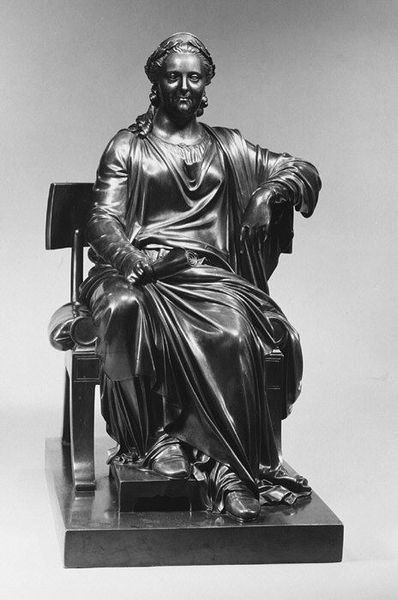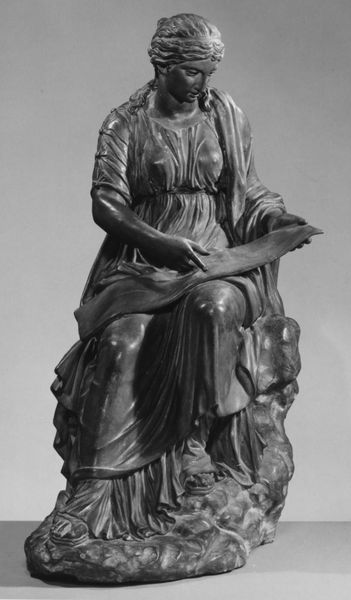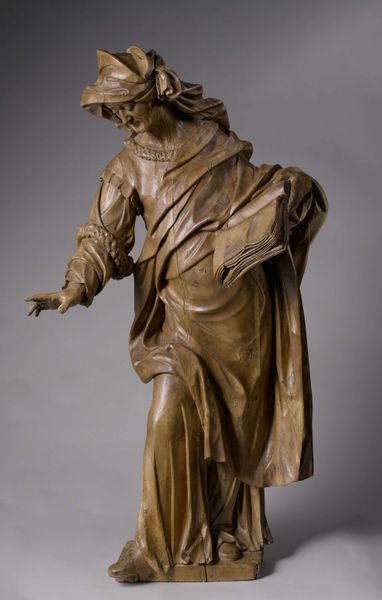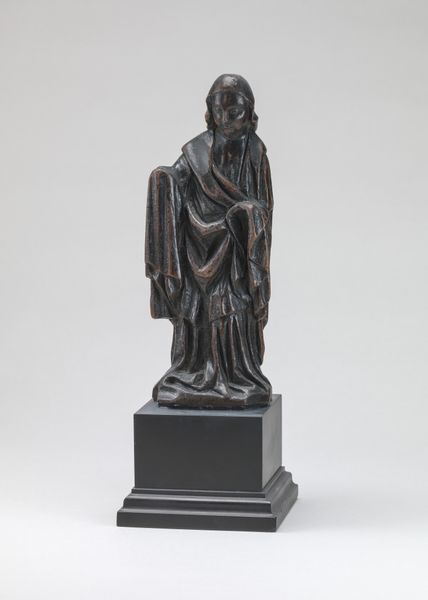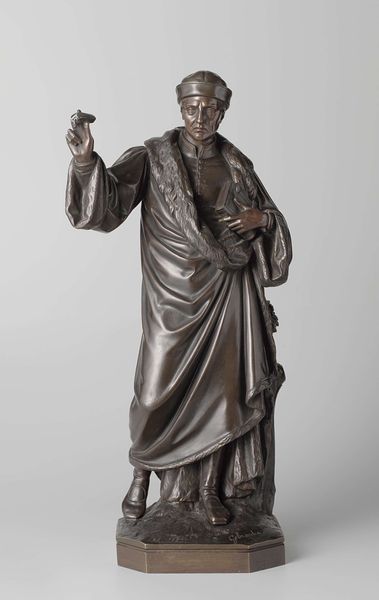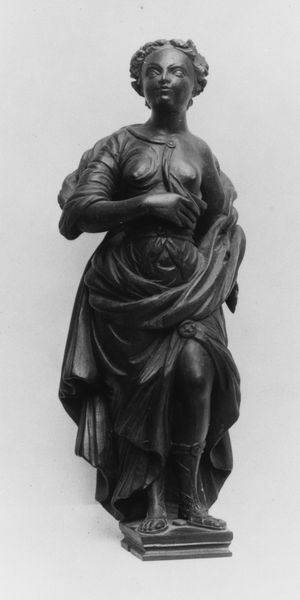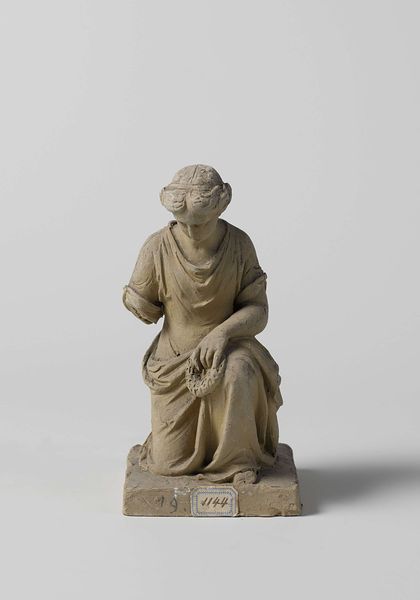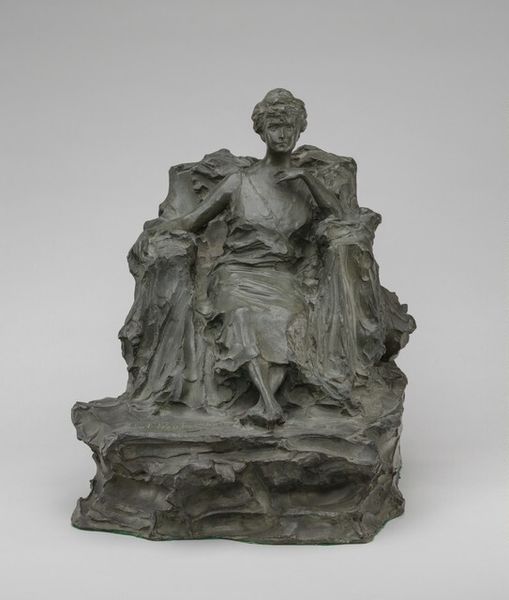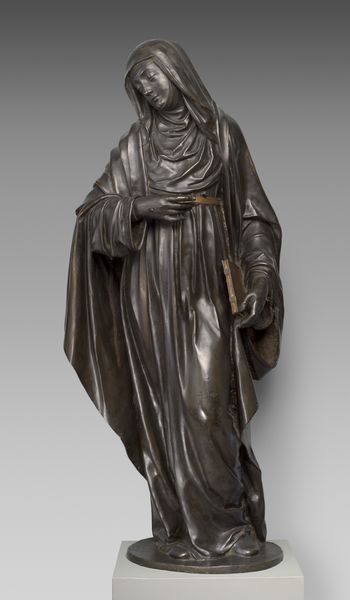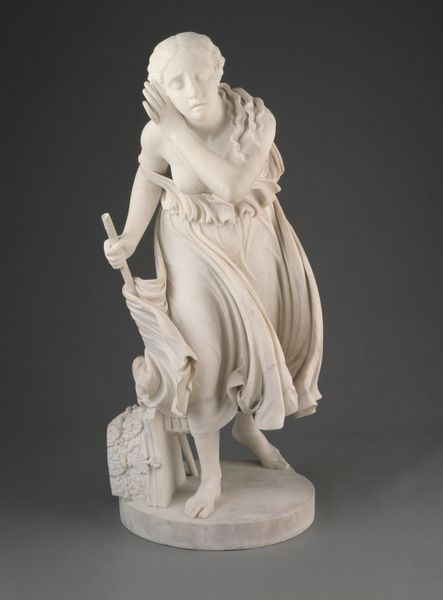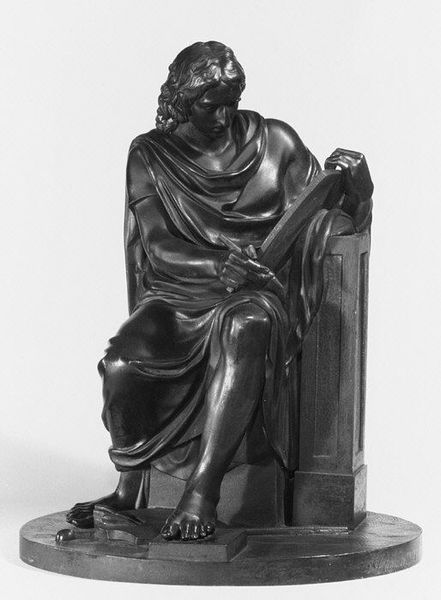
sculpture, marble
#
portrait
#
neoclacissism
#
sculpture
#
classical-realism
#
figuration
#
form
#
ancient-mediterranean
#
sculpture
#
marble
#
statue
Dimensions: height 140 cm, width 70 cm, depth 80 cm, weight 430 kg, weight 524 kg, width 71 cm, depth 54 cm
Copyright: Rijks Museum: Open Domain
Francesco Righetti crafted this lead sculpture of Euterpe, one of the Muses, in the late 18th century. The dominant symbol here is the Muse herself, holding a flute, emblem of music and poetry. In antiquity, the Muses were not just sources of inspiration but were seen as the very embodiment of art, science and memory. Consider how the image of a seated figure, often female, has been associated with wisdom and authority across various cultures, from depictions of ancient goddesses to royal portraits. Euterpe's seated pose, though serene, conveys a sense of command. Her gaze does not meet ours, suggesting a world of inner contemplation and artistic vision. The flute, almost an extension of her hand, hints at the breath of life and inspiration that she channels. The enduring appeal of the Muses lies in their ability to evoke the power of the arts as a link to our deepest memories and aspirations. This symbol of artistic creation, of music and poetry, is reborn through Righetti's hands, carrying forward the cultural memory of classical antiquity.
Comments
rijksmuseum about 2 years ago
⋮
Amsterdam banker and art collector Henry Hope commissioned this sculpture for his country estate Welgelegen near Haarlem. It was based on an Ancient marble figure now at Newby Hall in England. Euterpe, holding a flute, is the Muse of music and lyrical poetry.
Join the conversation
Join millions of artists and users on Artera today and experience the ultimate creative platform.
